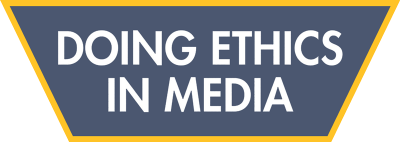Newly published research shows that the value of ethics codes “seems to be lost on student journalists.”
Penn State’s Kirstie E. Hettinga and Marie Hardin, writing in Media Ethics magazine, compare codes of ethics hanging on college newsroom walls to signs that point to fire exits: “It’s there if they need it, but it’s not something that draws daily attention.”
Their interviews of 50 collegiate editors notes that the Society of Professional Journalists Code of Ethics discusses plagiarism (a key ethical issue in college newsrooms) but offers nothing specific about other key ethics issues, such as covering student deaths and crime.
The authors say that media ethics instructors should
think about incorporating a session in their classes that goes beyond discussing codes of ethics and works with how the code can be applied and used in real-life situations. Again, a case study may be the appropriate way of helping students learn how to use the code, rather than seeing it as a set of standards.
Doing Media Ethics: Theories and Practical Applications does just that. Chapter 2 asks the question “Why not follow the rules?” — our way of arguing that the ethical thinking that shows itself in law and ethics codes is often insufficient to solve true ethical dilemmas.
